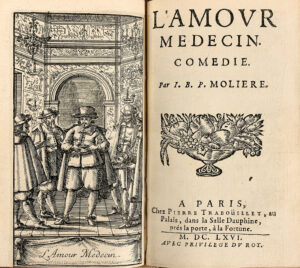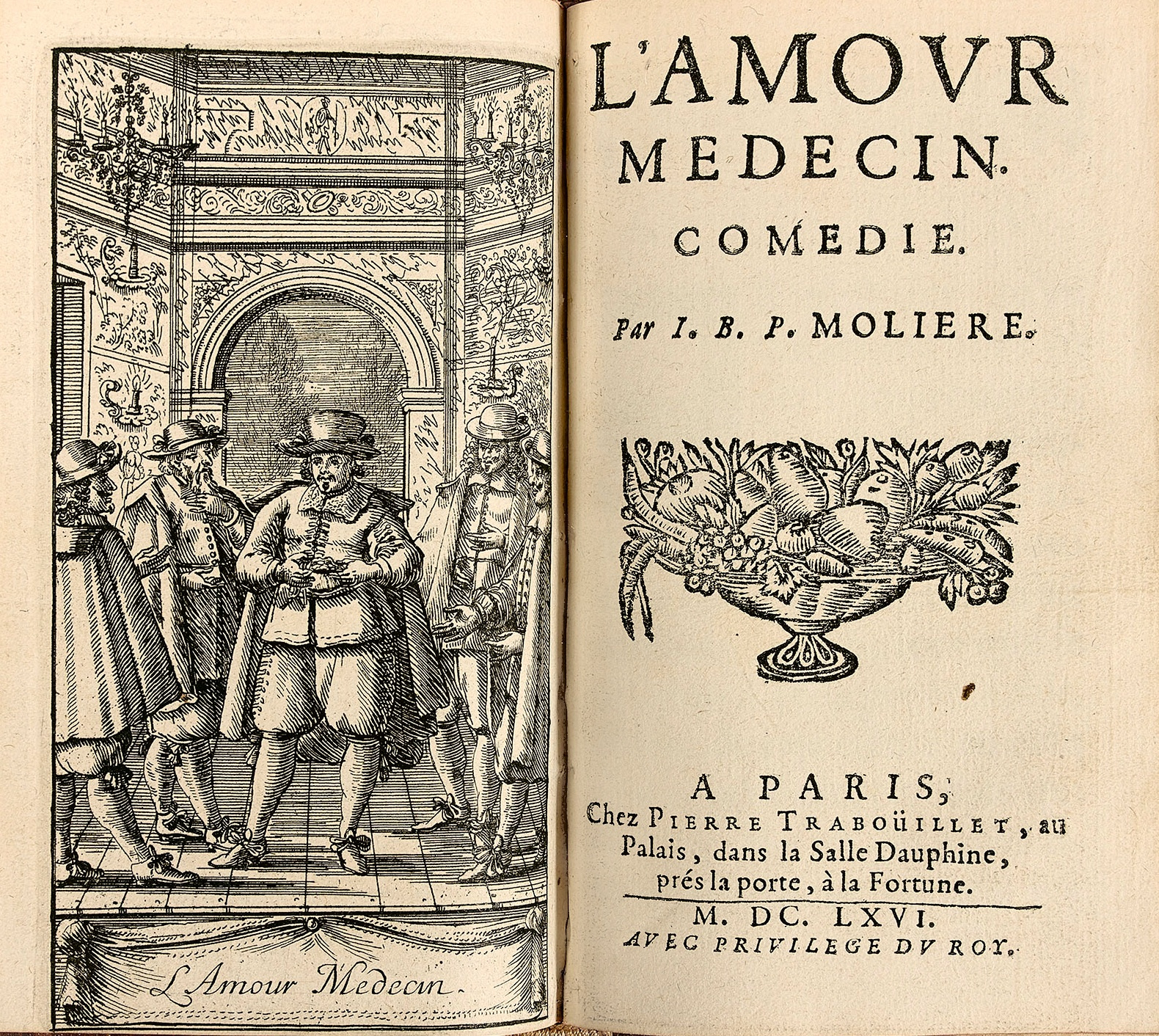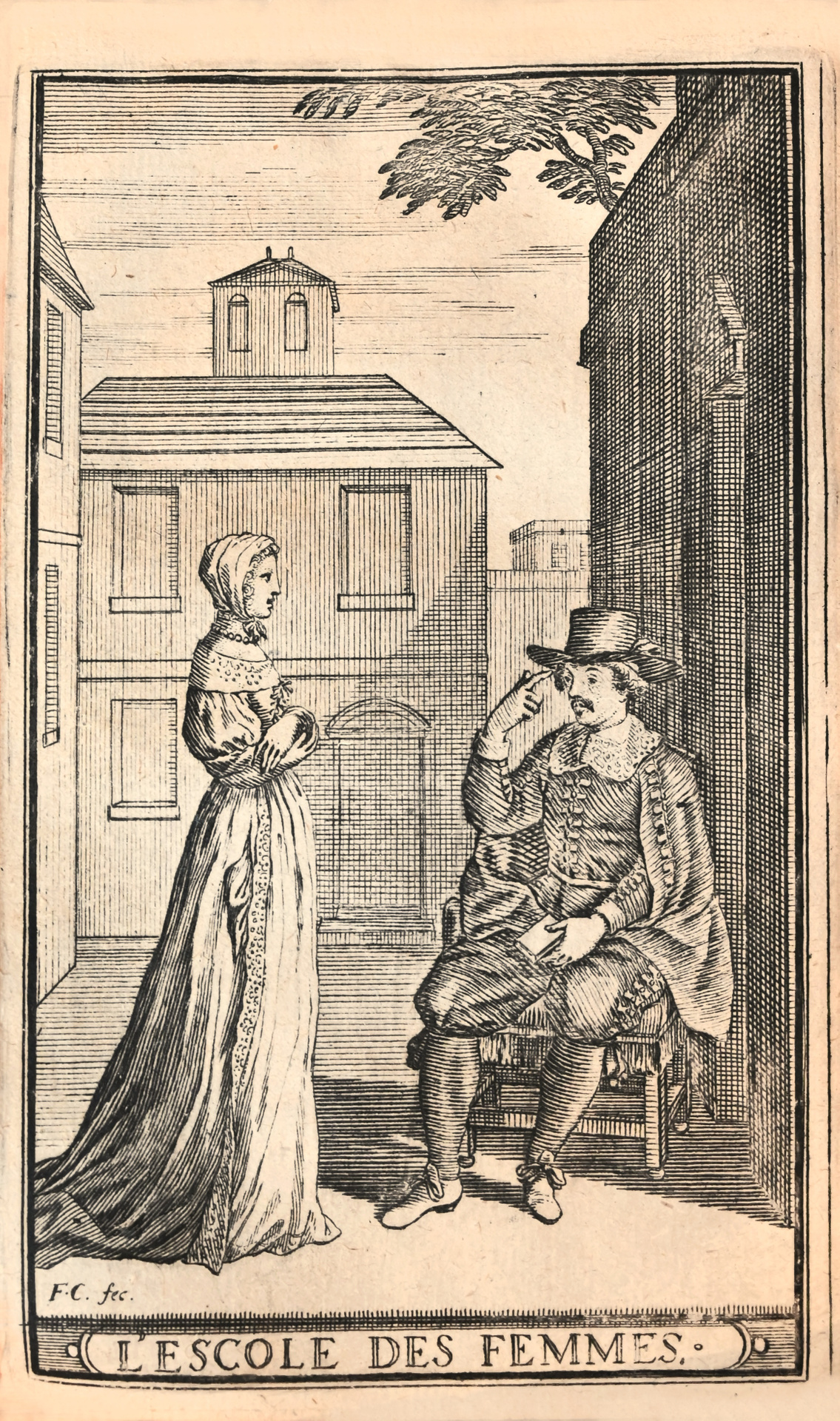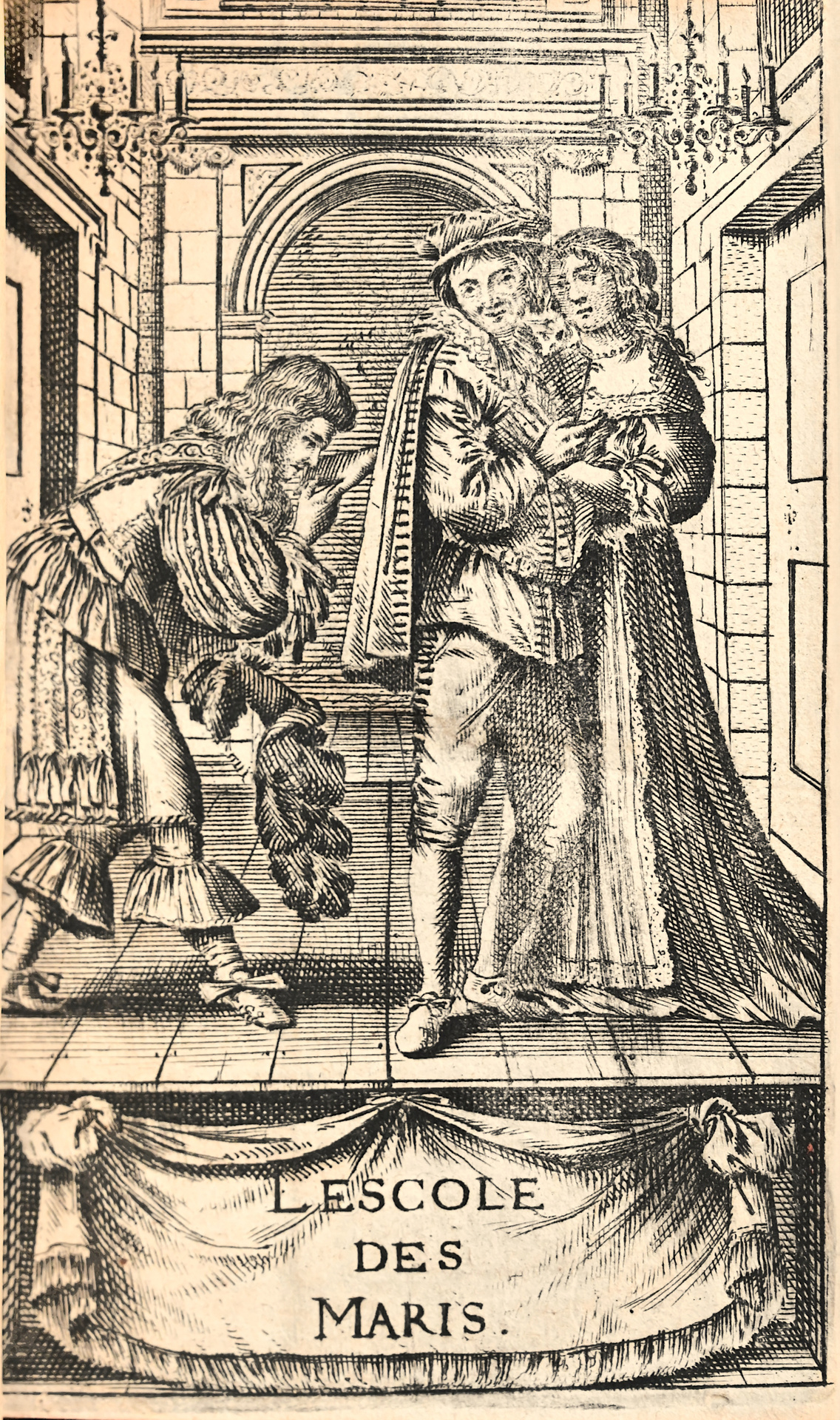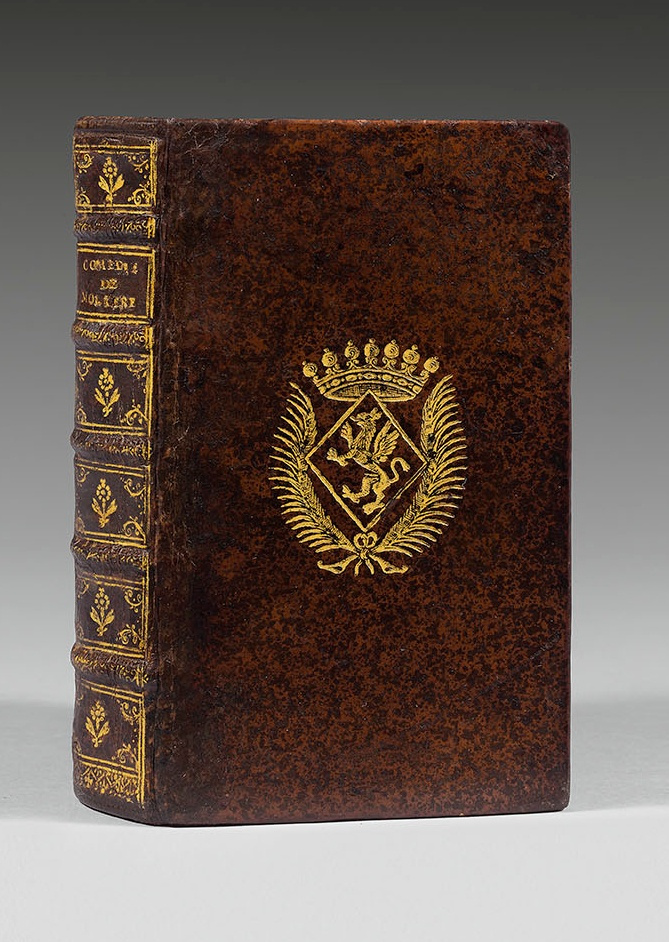Paris, Guillaume de Luyne, Claude Barbin, Pierre Tribouillet, 1663, 1665 et 1666.
12mo [140 x 82 mm], full granite-like brown calf, gilt arms stamped in the center of the covers, decorated spine ribbed, minor restorations, red edges. Contemporary armorial binding.
"After the success of Molière's performances, followed by the fast sale to the public of the plays printed separately, it was to be expected that a general collection of his comedies would be published, with or without the author's permission. Two mêns were offered to the publishers. The first, the most rational, was to put together a collective edition, authorized or not by Molière, with continuous pagination, a half-title for êch play and a general title for the whole. On the contrary, the second, much simpler procedure consisted in binding together the plays alrêdy printed and to precede or not the whole with a general title bêring either on the back or on a separate lêf the list of the comedies contained in the work. Of course, in this case, it was no longer a question of followed pagination. The plays alrêdy existed at their own dates in the collection with the name of their printers ". (A. J. Guibert. Molière CNRS - Premiers essais d’éditions collectives). The following five plays were collected and bound together at the time: I- L’Escole des maris, Comédie, de I.-B. P. Molière représentée sur le Théâtre du Palais Royal. Paris, chez Guillaume de Luyne, 1663. 12mo of (5) ll. (frontispiece, title, epistle, characters), 65 pp. and (3) pp., (2) bl. ll. Second original edition, reproducing the first edition of 1661. Paul Lacroix also reports it under the date of 1664; it was shared among the booksellers who were granted the privilege of 1661. Very rare complete with the last two blank lêves in contemporary armorial binding. II- Les Fascheux, Comédie de I.-B. P. Molière, représentée sur le Théâtre du Palais Royal. Paris, [Guillaume de Luyne], 1663. 12mo of 82 pp., (1) p., (1) bl. p. Very rare edition from Grenoble printed one yêr after the first. III- L’Escole des femmes, Comédie. Par I.-B. P. Molière. Paris, Claude Barbin, 1665. 12mo of (6) ll. including one figure and 95 pp. Second edition, which reproduces exactly the first edition. The edition is illustrated with the precious frontispiece engraved by François Chauvêu which represents the oldest portrait of Molière. It can be qualified as a "second original edition". Very rare in contemporary armorial binding. IV- La Critique de l’Escole des femmes, Comédie. Par I.-B. P. Molière. Paris, chez Claude Barbin, 1663. 12mo of (5) ll. (title, epistle, privilege and characters), 117 pp. and (1) bl. l. First edition. The privilege is dated June 10, 1663, and the imprint August 7, 1663. The edition was shared between Claude Barbin, Charles de Sercy, Thomas Joly, Guill. De Luyne, Louis Billaine, Et. Loyson, Jên Guignard and Gabriel Guinet. Very rare complete with the last blank lêf preserved in its original armorial binding. V- L’Amour médecin. Comédie. Par I.-B. P. Molière. Paris, chez Pierre Trabouillet, 1666. Avec Privilège du Roy. 12mo of (6) ll. including 1 engraved frontispiece and 95 pp., the last one wrongly numbered 59. First edition. The privilege is dated December 30, 1665 and the imprint January 15, 1666. The edition was shared between Pierre Trabouillet, Nicolas le Gras and Th. Girard. This type of collection in a contemporary armorial binding is of the utmost rarity in the collections of grêt classics of the seventeenth century. Most of the original or rare editions of Moliere's plays were bound by the grêt masters of the nineteenth century. Very few copies in private hands are still preserved nowadays in their original binding without arms: vellum, calf or morocco. Thus Jacques Guérin owned a single factitious copy of Molière’s Works of 1673 bound in 8 volumes 12mo, contemporary red morocco without arms with 7 plays in first edition, sold for 2 100 000 FF (320 000 €) nêrly 30 yêrs ago, a considerable bid at the time (Reference: Bibl. J. Guérin. Livres exceptionnels, Paris 29 November 1988, n° 23). The present copy is one of the only known copies preserved in its original armorial binding attributed to a lady Cauchon whose family included an abbess in the seventeenth century.
See less information
